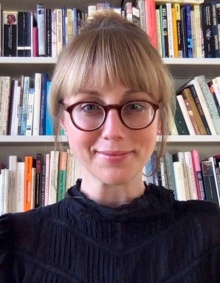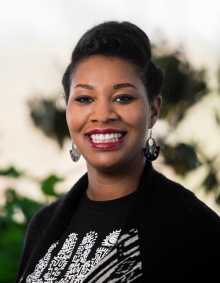Rewriting "American Architecture"
Recovering Black Narratives of Space
![Johnston, F. B., photographer. (ca. 1902) Roof construction by students at Tuskegee Institute. Alabama Tuskegee, ca. 1902. [Photograph] Retrieved from the Library of Congress, https://www.loc.gov/item/2014646489/.](/content/ap/news-events/special-events/rewritingamericanarchitecture/jcr%3acontent/top/image.img.926.auto.png/1599239337640.png)
Johnston, F. B., photographer. (ca. 1902) . Alabama Tuskegee, ca. 1902. [Photograph] Retrieved from the Library of Congress, https://www.loc.gov/item/2014646489/
September 16, 2020
6 pm - 8 pm
This colloquium invites you to consider the ways that recovering black narratives of space propels us toward a more equitable reconsideration of canonical histories of American architecture. It begins with a brief outline of the racial and nationalist myths that were immortalized by early histories of American architecture, from the early histories of Fiske Kimball to the postmodern tinged histories of Vincent Scully. Then it transitions into three short presentations of new histories of African American architecture that recover important details about black cultural production: from the radical spatial imaginaries of nineteenth-century Black industrial education to the latent and concrete architectural principles of Black Power politics. These new histories enable us to better assess the blatant omissions, erasures, and biases that were perpetuated by early twentieth century histories—a record that continues to haunt architectural education today.
Moderator

Charles L. Davis II is an assistant professor of architectural history and criticism at the University at Buffalo's School of Architecture and Planning. His academic research examines the integrations of race and style theory in modern architectural debates from the late nineteenth to the mid-twentieth century. He is the author of Building Character: The Racial Politics of Modern Architectural Style (University of Pittsburgh, 2019) and Race and Modern Architecture (University of Pittsburgh, 2020), which collects 18 case studies on the racial discourses of modern architecture from the Enlightenment to the present. His research has been supported by grants from the Canadian Center for Architecture, the Temple Hoyne Buell Center for the Study of American Architecture and the Graham Foundation for Advanced Studies in the Fine Arts.
Panelists

Brian Goldstein is Assistant Professor of Architectural History in the Department of Art and Architectural History at Swarthmore College. Previously, he was assistant professor in the School of Architecture and Planning at the University of New Mexico and an A.W. Mellon Postdoctoral Fellow in the Center for the Humanities and the Department of History at the University of Wisconsin-Madison. He received his PhD from Harvard University in 2013. He is the author of The Roots of Urban Renaissance: Gentrification and the Struggle Over Harlem (Harvard University Press, 2017). His current manuscript, which was awarded a publication grant from the Graham Foundation, considers the life and legacy of the African American architect J. Max Bond.

Maura Lucking is a Lecturer at UCLA’s Department of Architecture and Urban Design, where she is completing her PhD in Architecture. Maura was awarded a Graham Foundation grant with Andrea Lewis for a documentary on Rudolf Schindler’s Bethlehem Baptist Church; a space designed for a middle-class African American congregation in Los Angeles’ Central Avenue corridor. She is also the Associate Chair of SAH’s Race and Architectural History Group. Her dissertation, “American Artisan: Design and Race-Making in Industrial Education, 1886-1924” examines design pedagogy at American industrial institutes at the turn of the twentieth century and the racial politics of labor and craft traditions within architectural discourse.

Amber Wiley is an Assistant Professor of Art History in the Department of Art History at Rutgers University. Previously, she worked in the School of Architecture at LSU and as faculty at Skidmore College before joining the Art History department at Rutgers. She completed her PhD in American Studies from George Washington University, her Masters of Architectural History from the University of Virginia, and her Bachelor of Art in Architecture from Yale University. Her current manuscript is entitled “Concrete Solutions: Brutalism and Black Power in the Nation’s Capital.”
Participants are encouraged to review the following articles and syllabi developed by our presenters, in preparation for the colloquium and discussion.
Articles
- Brian Goldstein, “The Search for New Forms: Black Power and the Making of the Postmodern City,” Journal of American History, Volume 103, Issue 2 (Sept 2016): 375–399
- Anna Goodman and Maura Lucking, “Images Doing Work: Construction Photography at the Tuskegee Institute and Black Mountain College,” Journal of Architectural Education, vol.73, no.2 (Oct. 2019): 241-25
- Amber Wiley, “Schools and Prisons,” The Aggregate website, Volume 2, March, 2015. Accessed July 21, 2020
Course Syllabi
- Brian Goldstein. "Race, Space, and Architecture"
- Maura Lucking. "Race, Myth, and Landscape: The Design of White Supremacy"
- Amber Wiley. "Investigating and Documenting the Hidden Landscapes of Slavery"